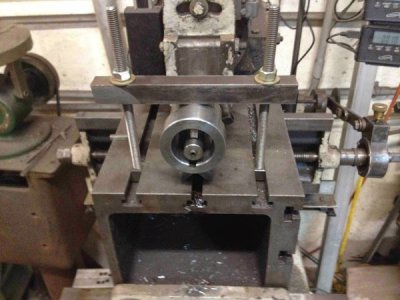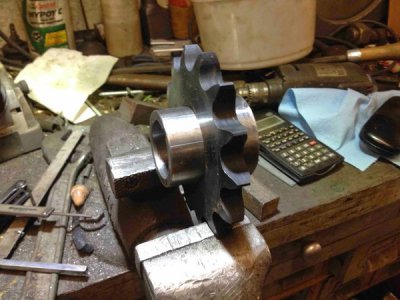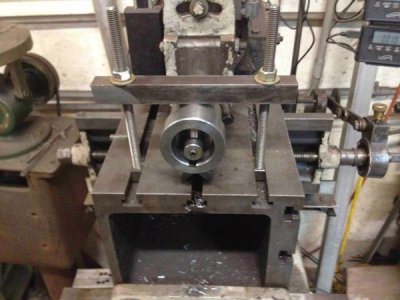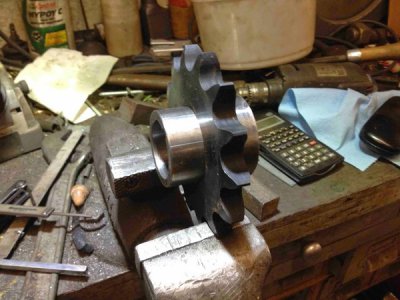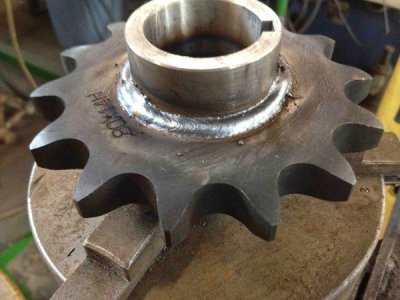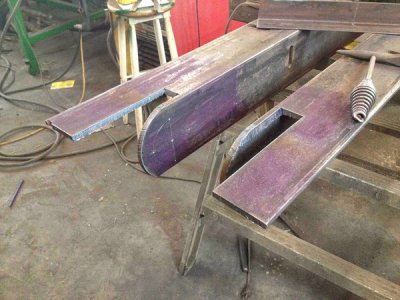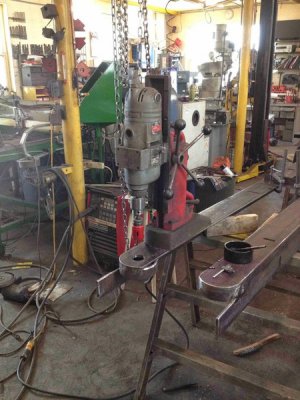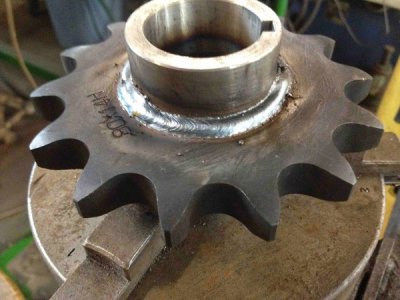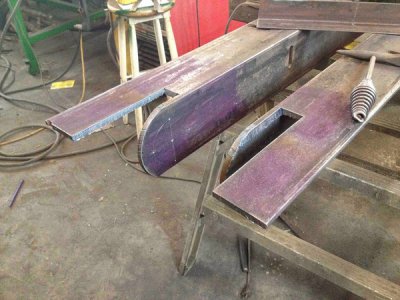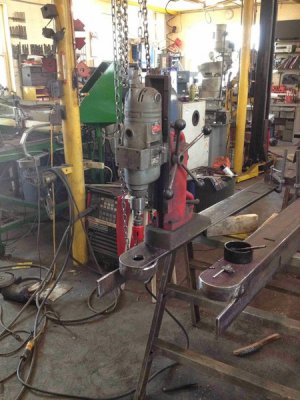I rebuilt this old Wisconsin a year or so back with plans of running the processor with it.
View attachment 83293
View attachment 83294
It produces 16 god fearing horse power at 26
00 rpm with a 100% duty cycle.
It had seen a hard life on a NewHolland bailer. There was about 20 thou taper in the cylinders, decided to try boring it out on the lathe.
View attachment 83295
Worked like a charm, couldn't detect any taper or out of round with my dial bore gauge, a final honing brought it into spec for a 30 thou over set of pistons and rings.
The crank runs on tapered roller bearings, the end play on them was still in spec as were the babbit rod bearings. Yes rabbit rod bearings as in Model T Ford, this engine has been around a while.
It needed valve guides which are still available from Wisconsin. The valves and seats were ground and lapped in. The throttle shaft in the carb was badly worn as was the body, it was reamed out oversized and a new throttle plate shaft fabricated.
Runs like new now, waiting for a load.
Interesting point with these engines, both pistons go up and down at the same time to give a power stroke every turn, to do this they have massive counterweights on the crank, and a flywheel that must weigh 30 or 40 pounds. As a result, when you rev it up the twist in the plane of the flywheel is incredible. I had it bolted down to two 4x4s on the shop floor, with the bucket of the tractor holding them down. It would sit there and idle no problem, till you changed the speed, as it revved up it would twist the timbers from under the bucket, then sit there at the new speed. Had to put a rubber mat under the wood to give some friction on the concrete.
Greg
- - - Updated - - -
Built a CNC plasma table last winter and haven't had much chance to play with it. Today decided to learn how to nest parts, while making a sprocket for what I think is called Link Belt Chain. I have the chain from an old sawmill but no mating sprockets.
View attachment 83298
Parts for a sprocket in kit form.
View attachment 83300
This will probably be for the conveyor to move the split wood to the trailer.
View attachment 83301
Greg


